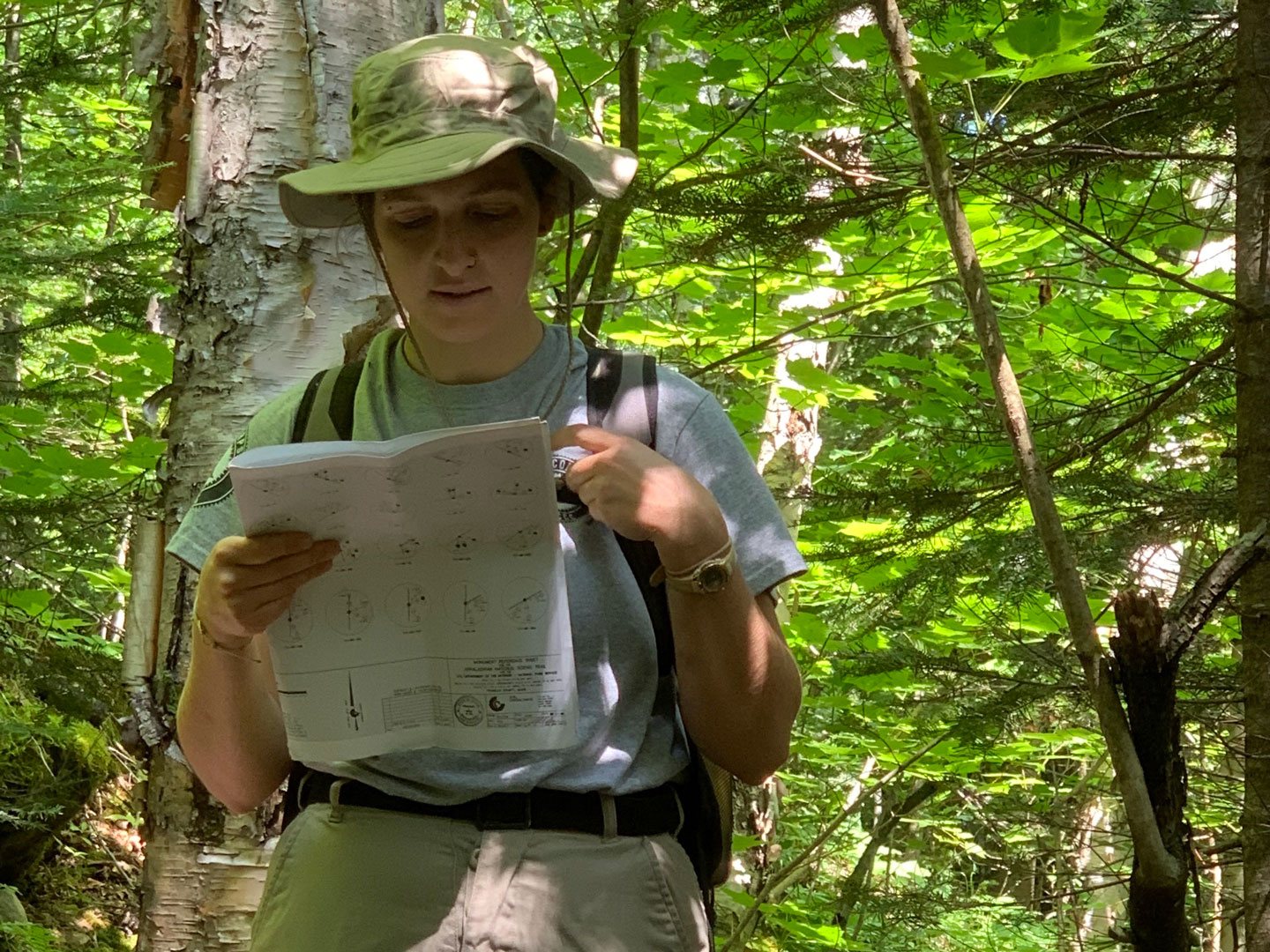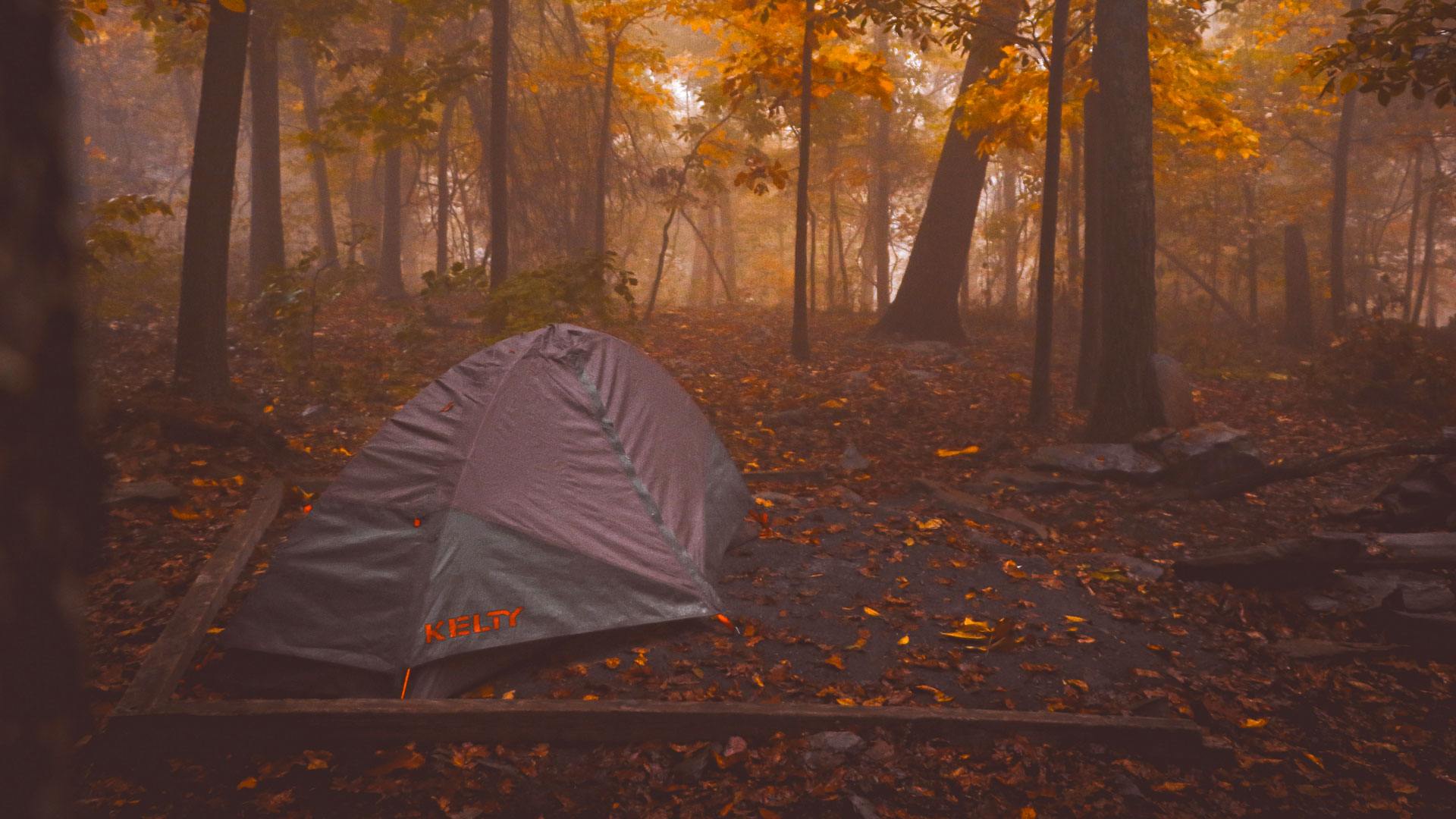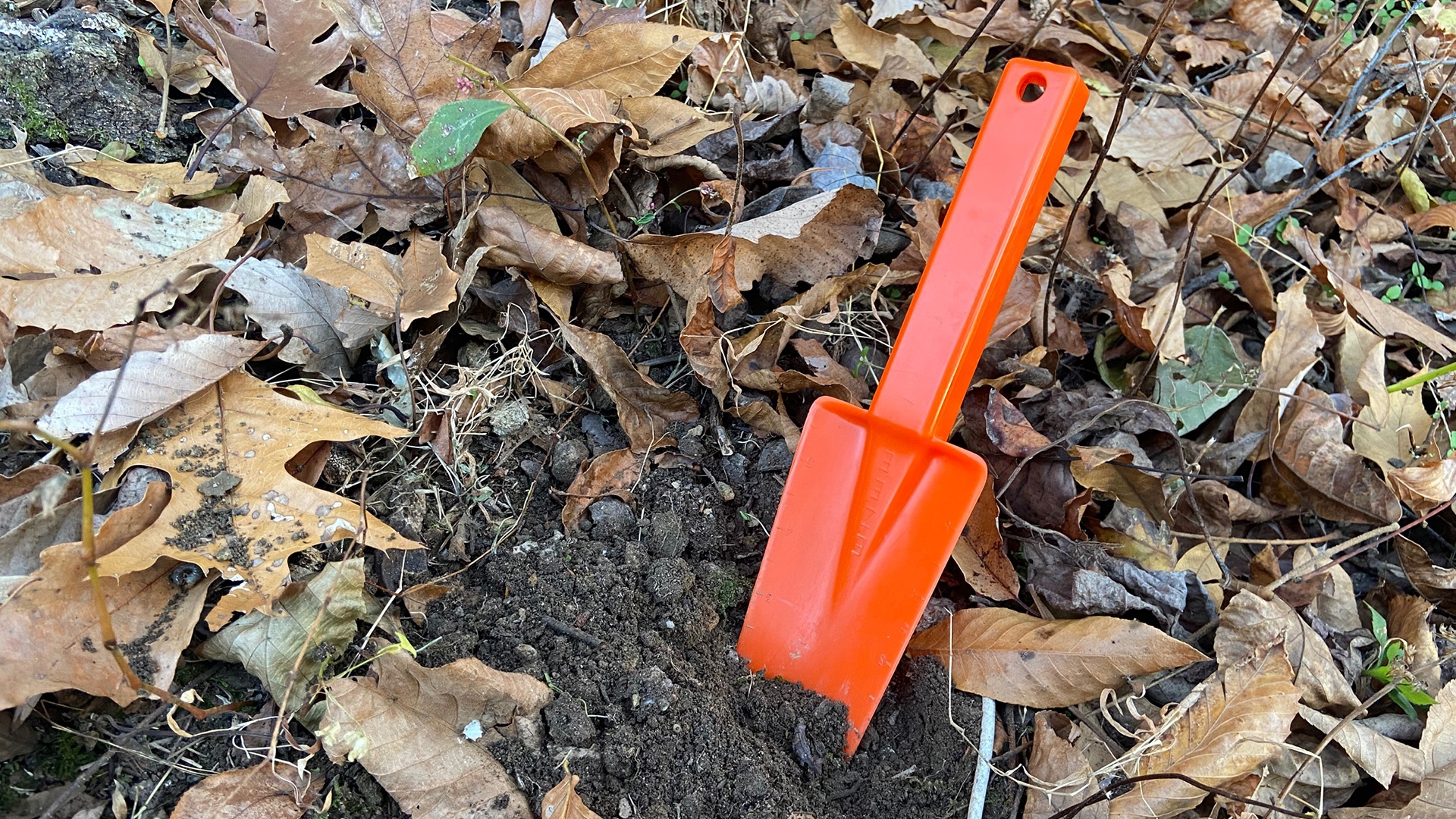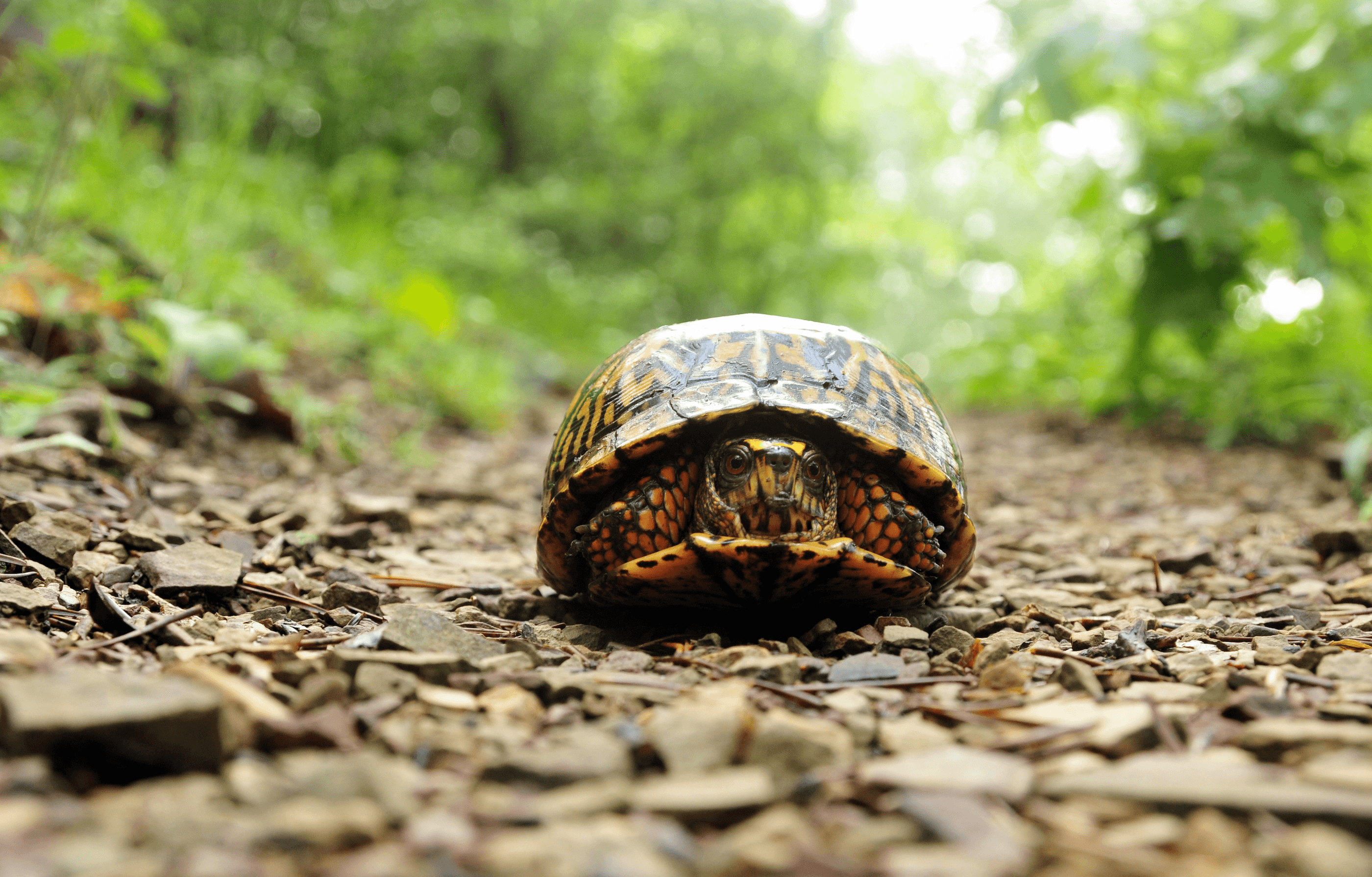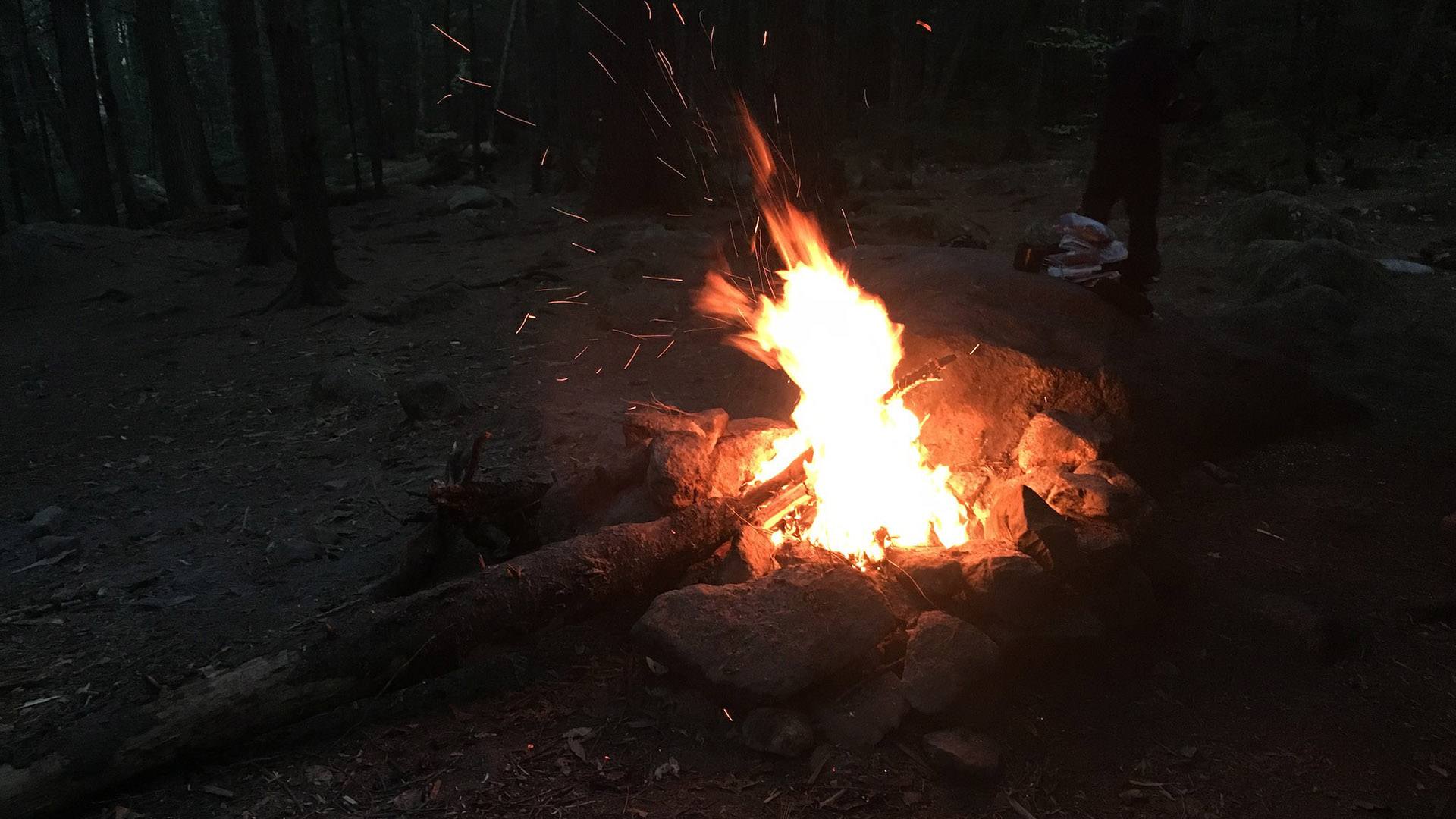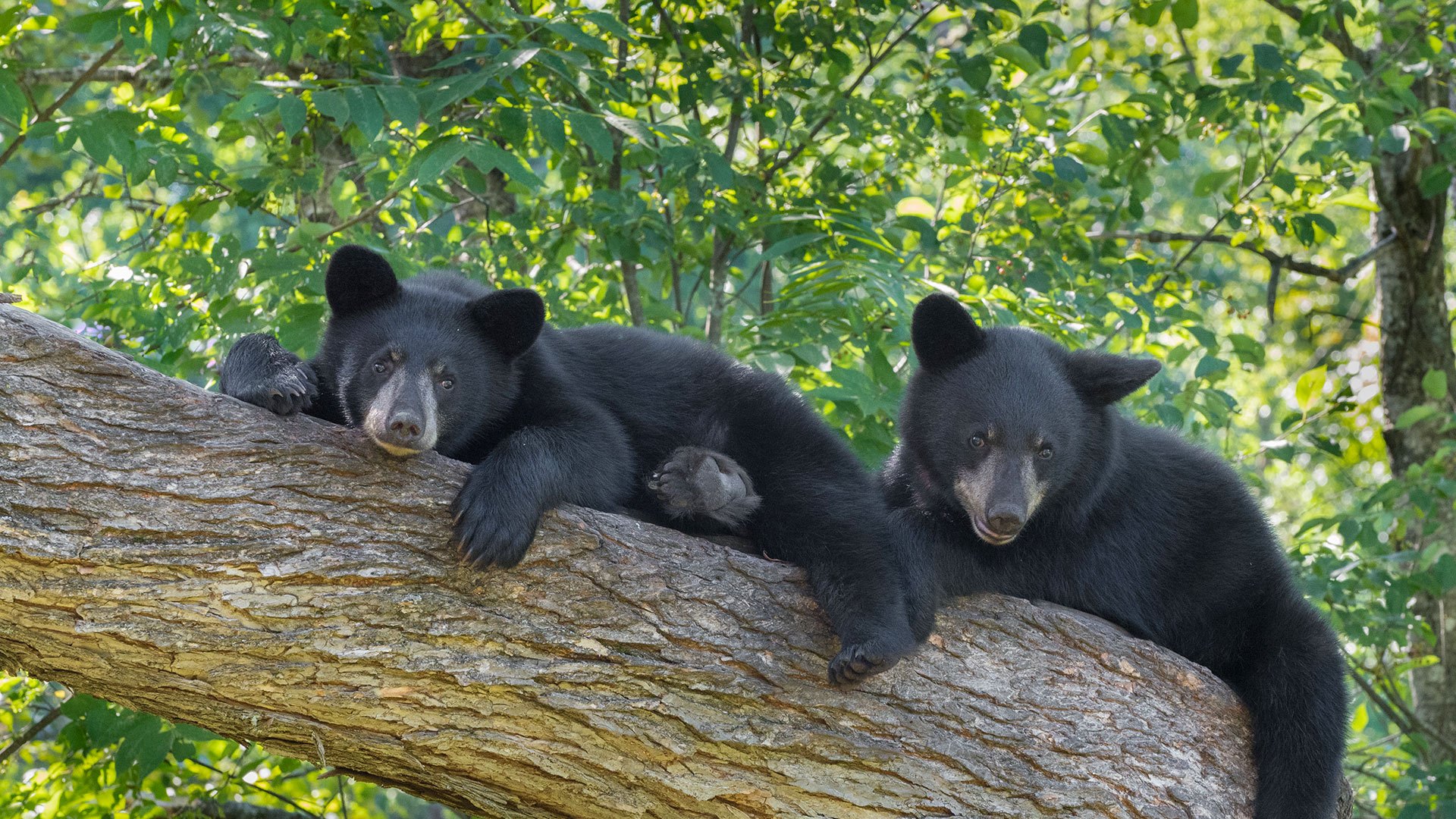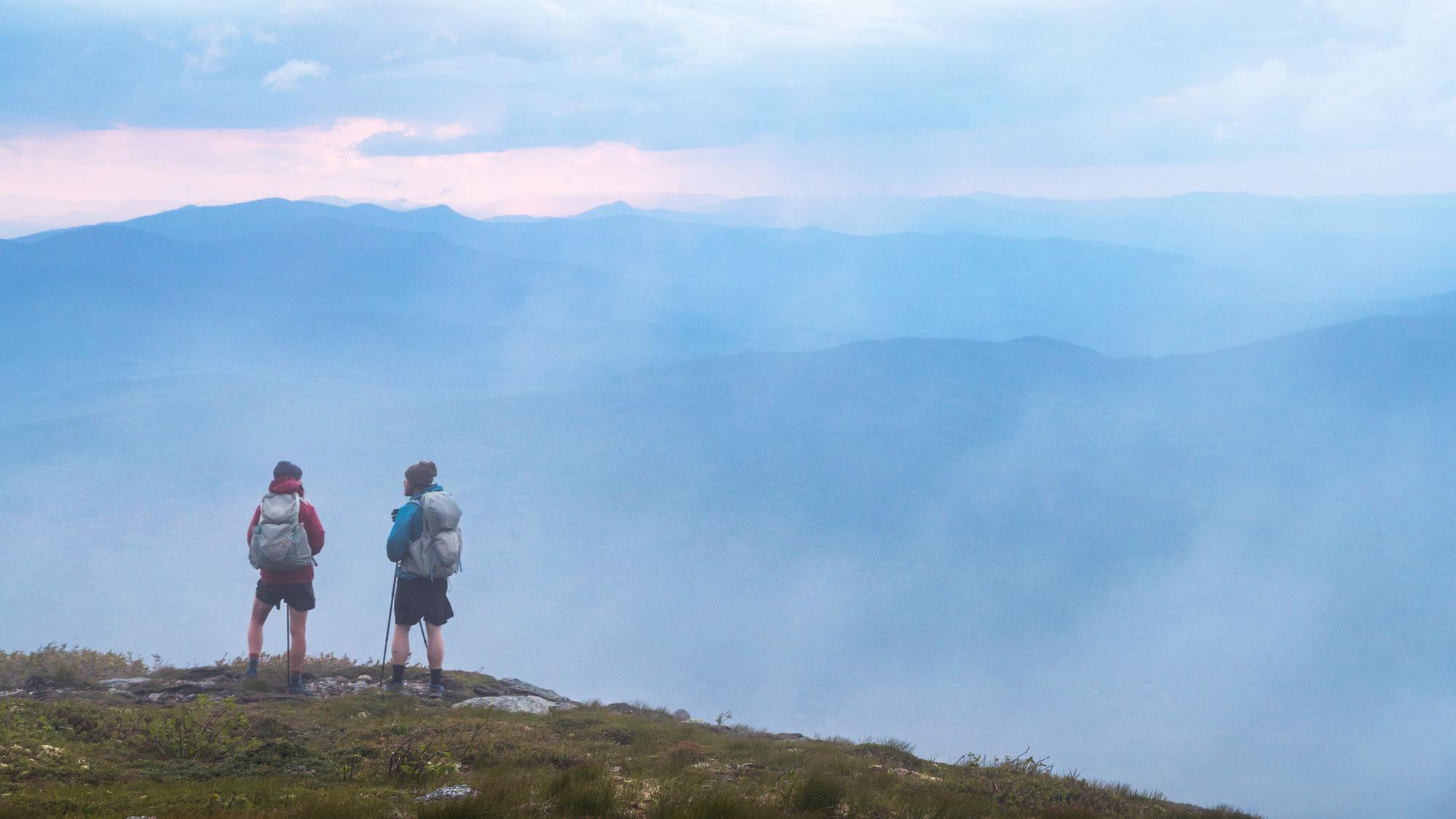Protect the A.T. Experience
Leave No Trace Guidelines for Groups
The Appalachian Trail is managed to protect its natural resources and provide a specific “Trail Experience,” including opportunities for quiet contemplation and solitude. To protect the natural and experiential conditions along the Trail, organized group leaders are encouraged to teach participants low impact practices and ethics.
Leave No Trace is an educational program that combines outdoor knowledge, judgment and ethical responsibility. Outdoor organizations provide training, equipment, expertise, and logistical support for everyone from novices to experienced travelers. Groups play a critical role in shaping the lifelong skills and ethics of their participants. Many were first introduced to camping on a church group or scouting trip, at a summer camp, with a hiking club, or through a trip with a school.
Large organized groups have earned a bad reputation which is sometimes deserved, and sometimes not. Noise, crowding, trash, poor sanitation, tree damage, and other impacts are often blamed on organized groups. The practices a group uses, and how it behaves in the outdoors, are more important than actual group size in determining the effects it has on the land and other visitors.
This webpage teaches ethics and practices that preserve the Appalachian Trail’s resources and the quality of outdoor experiences. Please familiarize your group with these practices. Please make Leave No Trace part of your group’s training, and help protect the Trail.
Plan Ahead and Prepare
Outdoor visits can be enhanced by taking the time to improve outdoor skills, learning about the area to be visited, planning the trip carefully, and bringing the right gear. Match your group’s physical conditioning and experience with the terrain and distance to be hiked. Choose leaders who are experienced in outdoor skills, teaching, and Leave No Trace practices. Enroll your group leaders in a Leave No Trace Master Educator course or Trainer course. Develop sufficient leadership to break the group into small, independent teams to travel and camp. Teach Leave No Trace principles to the entire group before heading into the outdoors so everyone knows what is expected. Avoid lectures by using experiential teaching and teachable moments.
Helpful hints:
- Check with land managers and A.T. guidebooks for guidance on camping policies, group size limits, and whether permits are needed. Ask about the most suitable camping locations, or scout them out in advance.
- Please visit in the smallest possible group size. If your group is large, recruit enough leaders so you can break into smaller groups to travel and camp, for example, in groups of up to 8 or 10.
- Carry tents or tarps and leave shelters for solo hikers and groups of 4 or less.
- Avoid or stay only a short time at popular features, or visit them during times when they are less crowded.
- Reduce trash by repackaging food and planning your meals so you don’t have leftovers.
- Bring equipment that facilitates low-impact practices: trash bags, camp stoves, trowels for digging cat-holes and strainers for dishwater. Leave all woods tools (hatchets, axes) at home.
- Bring waterproof bags and at least 50 feet of rope to hang food, trash, and other scented articles, or carry bear-proof food containers.
Travel and Camp on Durable Surfaces
Trampled plants and soils sometimes recover slowly. Avoid impact in popular areas by concentrating your traffic on the most durable surfaces available and dispersing your traffic in pristine areas so visible impacts do not occur. Stay on durable surfaces that show little sign of your visit, such as non-vegetated rock or gravel, barren soils on established trails and recreation sites, or dry, short grasses.
With novices, it is best to stay on trails and established campsites until they have the skills necessary to travel in pristine areas with minimal impact. Off-trail travel requires more experience and scrupulous attention to Leave No Trace techniques. Failure to adhere to these practices can cause lasting environmental impacts. Only groups highly skilled in Leave No Trace should venture off
the beaten path.
Helpful Hints:
- Stay on well-established trails when traveling and when moving around camp. Avoid faint trails and off-trail traffic to protect plants and soils. Traveling single file near the center of the trail will avoid trail widening, particularly along muddy or rutted sections. Remove branches from the trail, rather than going around and creating new trails.
- Choose a campsite large enough for your group, or divide into smaller groups and use two or three smaller, durable sites.
- Concentrate all activities on the most durable or previously disturbed surfaces and avoid
trampling plants. - Gather as a large group only on durable surfaces, such as rocks, snow, gravel, and grass.
- Describe both durable and nondurable surfaces for your group. Help them recognize areas sensitive to human traffic such as wet soils, stream banks, and fragile plants like ferns, wildflowers, tree seedlings, moss, and alpine plants such as heather.
Dispose of Waste Properly
Leave the area free of trash and food scraps. Anything with a food smell attracts wildlife and alters their natural behavior with serious long-term effects. There is no “acceptable” waste, not even
that which is biodegradable, such as apple cores or pieces of dropped food. Perform some community service by carrying out food or trash left by others.
Think carefully about the maturity of your group when considering how you will dispose of human waste. With children and novices, you will need to be extremely diligent about instruction and compliance, and with them, it is usually best to camp near toilet facilities.
Helpful hints:
- “Pack it in; Pack it out.” Don’t burn, bury, or leave litter or extra food. Leave any food or equipment “donations” at hiker boxes at hostels and motels in town, rather than at shelters.
- Use the privy for human waste (feces) only. Do not add trash, including leftover food, disposable wipes or hygiene products, none of which biodegrade easily.
- Waste and toilet paper placed under rocks decompose more slowly and are frequently uncovered by other visitors or wildlife. If there is no privy, dispose of human waste by burying it in a “cat-hole” 6-8 inches deep and at least 200 feet (80 steps) from campsites, shelters, trails, and water sources. Or better yet, during the day find an isolated spot to “take care of business” a long distance from water and miles from any camp or shelter. Use a stick to push toilet paper to the bottom of the “cat-hole” (to discourage animals digging it up) – or even better, double-bag and carry it out. Used tea bags or crushed aspirin will absorb odors.
- Wash dishes, bodies, and clothing 100 feet away from water sources. Use biodegradable soap sparingly, or not at all. Strain dishwater to remove food scraps, and pack them out with the rest of your trash.
- Disperse toothpaste, cooking water, dishwater, and urinate at least 100 feet away from shelters, water sources, and campsites. This will reduce odors from these liquid wastes, and decrease the likelihood of wildlife being attracted into camp.
- Inspect your campsite and lunch areas carefully for trash or food scraps before moving on.
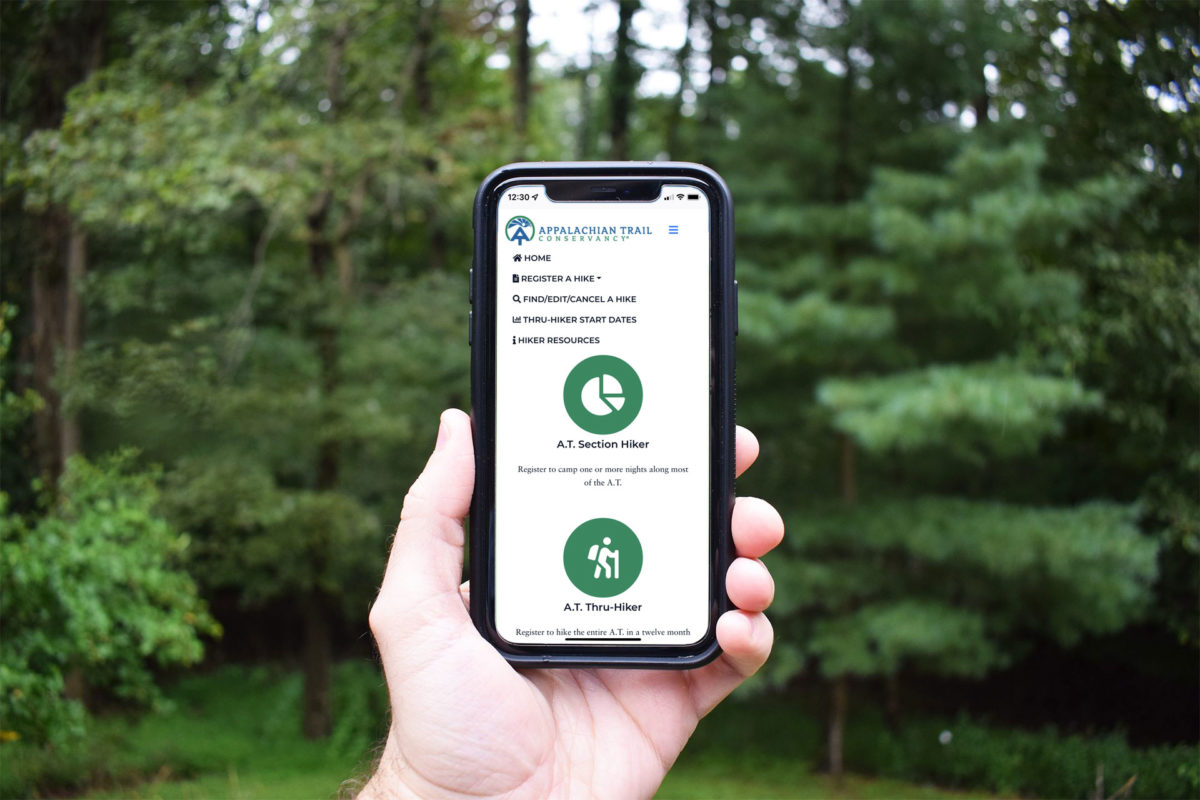
Register your group’s hike with ATCamp
ATCamp is a voluntary hiker registration system provided by the ATC. We encourage leaders of organized groups (including youth groups) who plan to spend one or more nights camping on the A.T. to register on ATCamp. By using ATCamp, you:
- Help preserve and sustain the A.T. for future visits.
- Prevent Crowding: the use calendars show numbers of other campers registered for designated overnight sites. If a start date or overnight site is full, you can use ATCamp to select a less crowded start date or location.
- Provide data that helps the ATC, land managing partners, and A.T. Clubs manage and maintain the Trail.
- Stay safe and informed on the Trail by signing up for Trail alerts and email updates.
Leave What You Find
Youth love to build dams and take home captured animals or insects as pets, or load their packs with interesting rocks, feathers and arrowheads. In the outdoors, these activities change the aesthetics of a site, may have a lasting impact on the ecology and the cultural record, and may be illegal. Consider the cumulative impact if everyone took home a memento.
Help your group recognize the magic of unaltered nature. Keep people active so they don’t get bored and start elaborate construction projects. Inspect your campsite before you leave and do your best to restore the site.
Helpful Hints:
- Leave cultural artifacts, plants, and other natural objects where you found them for others to enjoy.
- Supervise your group around sensitive plants, animals, or cultural sites. Crushed vegetation or damage to an historic foundation or stone wall can happen very quickly with energetic youth, no matter how well-meaning they are.
- Don’t leave graffiti, your name or other “mark” on trees, rocks, signs, or shelters.
- Green wood burns poorly; don’t damage live trees for firewood. Leave dead standing trees and dead limbs for the wildlife.
- Don’t build structures or dig trenches around tents.
Minimize Campfire Impacts
Campfires have their role. Many groups bond by telling stories, roasting marshmallows, or just hanging out around a campfire, but campfires can cause problems. Too many areas have campfire pits overflowing with charcoal and trash, damaged and felled trees, and areas stripped of wood.
Helpful Hints:
- Use stoves for cooking. Substitute candle lanterns for campfires, or experience nighttime without any lighting, watching the stars.
- If you need a campfire, build one only where it’s legal and in an existing fire ring. Keep campfires small and burn them for a short time to conserve wood. Leave hatchets and saws at home—collect only dead and downed wood that you can easily break by hand.
- Do not try to burn trash, including foil, plastic, glass, cans, tea bags, food, or anything with food on it. These items do not burn thoroughly. They create noxious fumes and residues, attract wildlife like skunks and bears, and make the area unsightly.
- Avoid burning large quantities of paper. Burn all wood and charcoal completely to ash before putting the fire out. Leave fire rings clean by removing others’ trash and scattering cold coals and ashes 200 feet away from camp.
Respect Wildlife
Help wildlife stay wild. Animals face threats from loss and fragmentation of habitat, invasive species, pollution, exploitation, poaching and disease. Protected lands offer a refuge from some, but not all, of these problems. Consequently, wildlife need hikers who will promote their survival rather than add to the difficulties they already face.
Helpful hints:
- Carry the gear needed to store food, trash, and scented articles out of reach of animals. This may require ropes for hanging food, bear canisters, or plastic food containers to keep rodents away.
- Pick up all food scraps, even dropped crumbs, and pack them out with your garbage so animals don’t associate humans with food.
- Keep a respectful distance from wildlife so as not to cause a change in their behavior. If you are hiking with a dog, keep it on a short leash.
- Observe animals from a distance. Carry binoculars or a telephoto camera lens to enhance your viewing.
- Supervise youth around wildlife. Educate them on the rationale for not chasing, disturbing, feeding, or getting too close to animals.
Be Considerate of Other Visitors
A primary argument for limiting group size is that large groups can have profound social impacts on other visitors. Such impacts can be avoided or reduced by responsible behavior.
Helpful Hints:
- Gather and camp as a large group only in locations out of sight and earshot from other visitors. Groups of 5 or more should not camp within shelters (except in areas that use reservations) and camp away from shelters whenever possible.
- Be aware of others. Move off the trail to a durable surface for breaks and to allow other hikers to pass.
- Let nature’s sounds prevail. Remind your group that voices can travel long distances.
- Do not use cell phones or audio equipment within sight or sound of other hikers, and turn
ringers off. - Remember: a group size limit of 10 means that your group never congregates in numbers greater than 10. If your group is larger than the area’s group size limit, break into smaller subgroups to travel and camp.
- Visit and enjoy, but don’t monopolize, water sources, viewpoints, or other areas of interest.
Learn More: The national Leave No Trace program is managed by the non-profit Leave No Trace Center for Outdoor Ethics. For more information, visit www.LNT.org or phone 1-800-332-4100 for educational materials, training opportunities and much more. For video links and details on Leave No Trace practices for the Appalachian Trail, see the Appalachian Trail Conservancy Leave No Trace web page, www.appalachiantrail.org/lnt. Visit “Appalachian Trail Leave No Trace” on Facebook.
Your help is needed: The Appalachian Trail is maintained by volunteers and managed in partnership by A.T. clubs, land-managing agencies, and the Appalachian Trail Conservancy. You are urged to enlist your group to do trail or campsite maintenance work, or other stewardship projects. Please contact the local land management agency or A.T. club for volunteer opportunities: www.appalachiantrail.org/volunteer.
Download a PDF of LNT Guidelines for Groups
Discover More
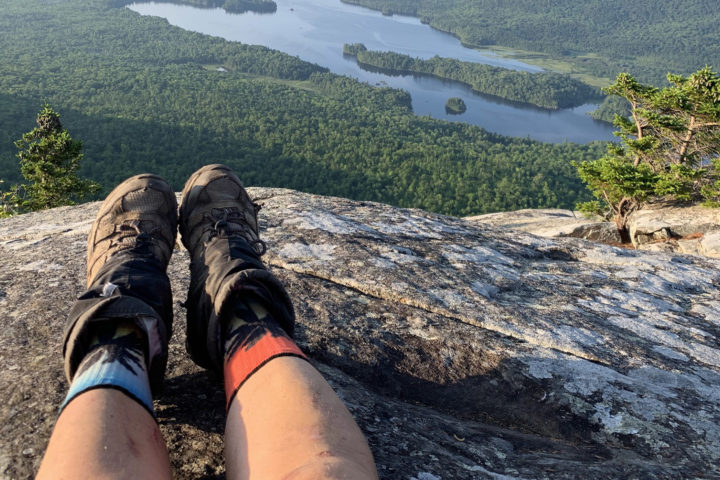
BACK TO THE BASICS
Leave No Trace
Wondering how you can take care of outdoor places like the Appalachian Trail (A.T.)?
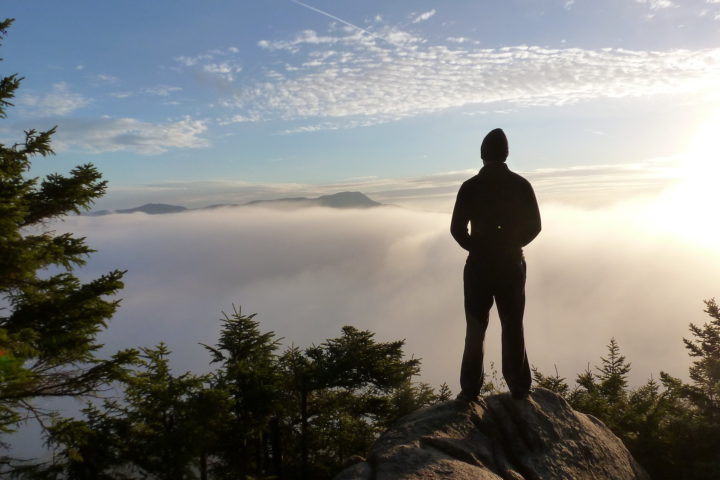
BY CAITLIN MILLER
11 Easy Ways to Improve Your Leave No Trace Footprint
A collection of simple and seemingly small ways you can practice Leave No Trace and help protect the A.T. experience.
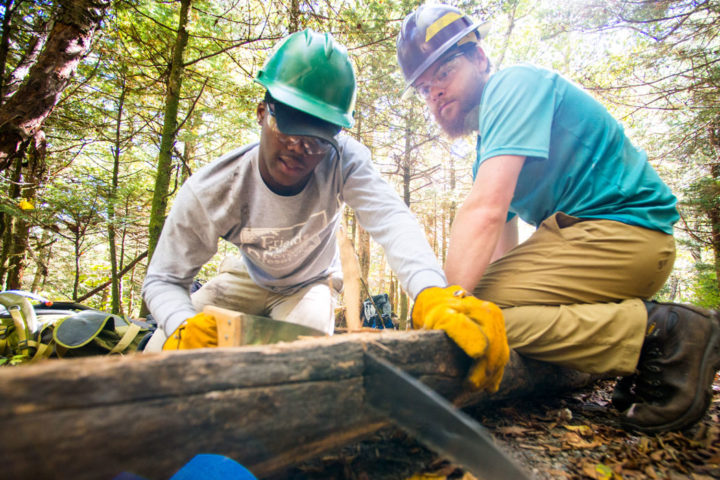
JOIN OUR EFFORTS
Ways to Volunteer
Volunteers are the heart and soul of the Appalachian Trail, and there are many opportunities for you to give back to the Trail you love so much.

